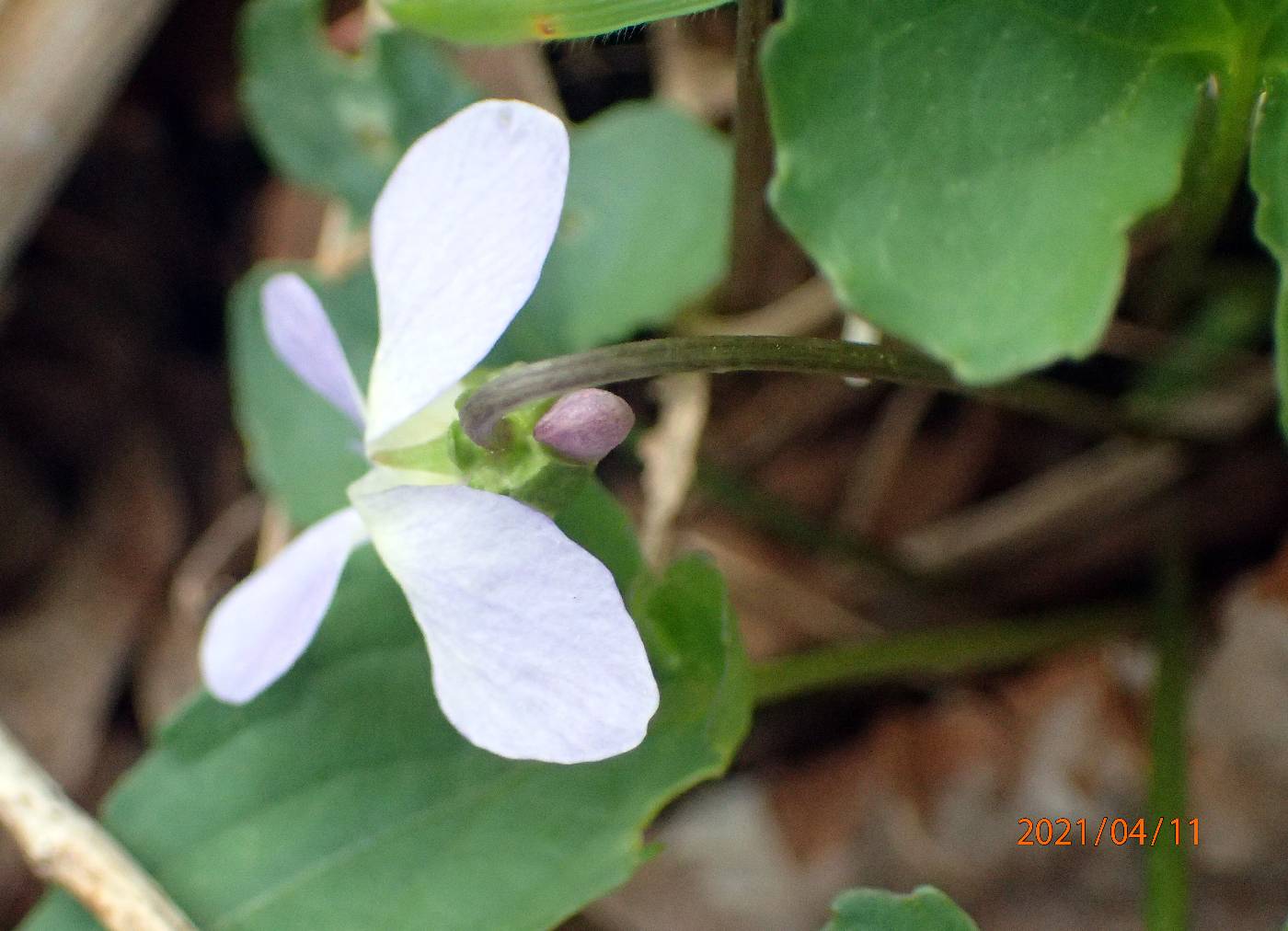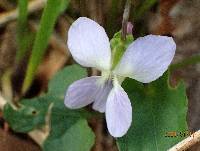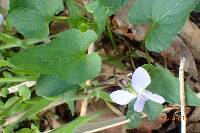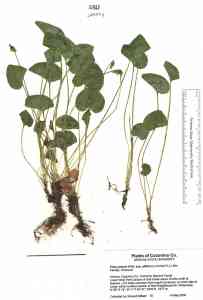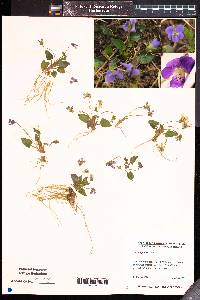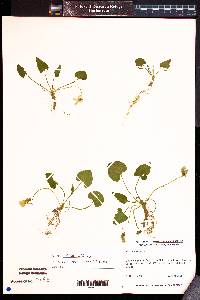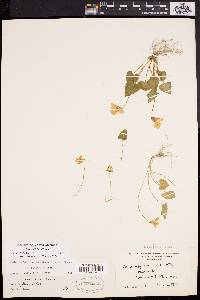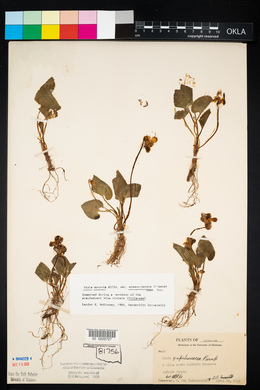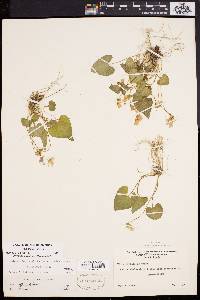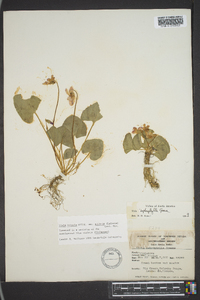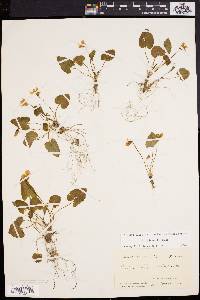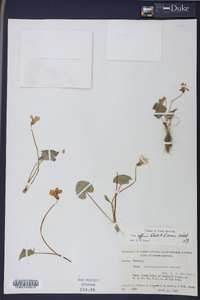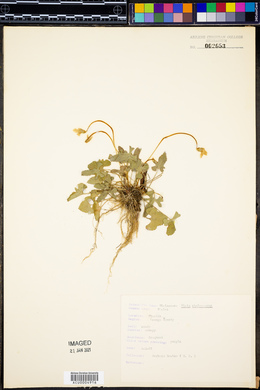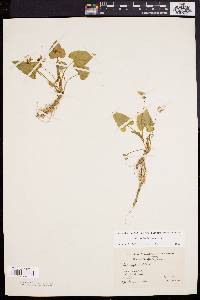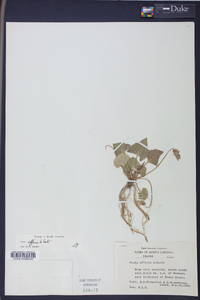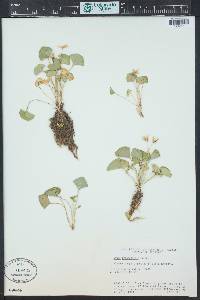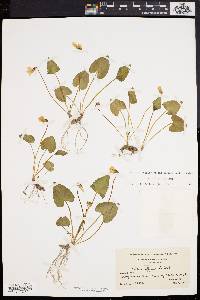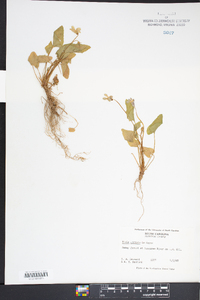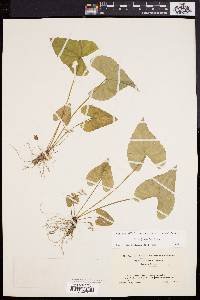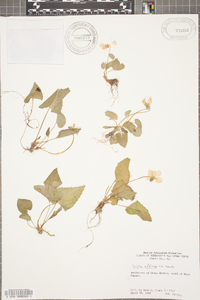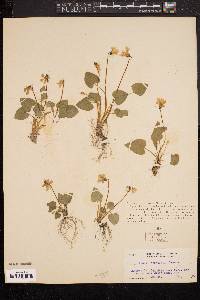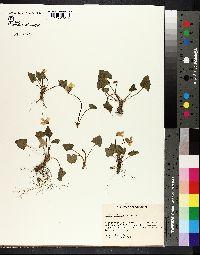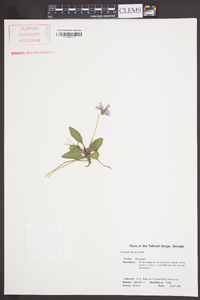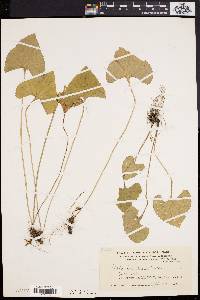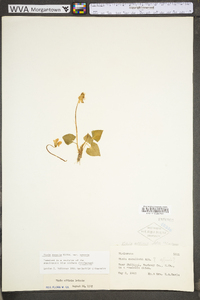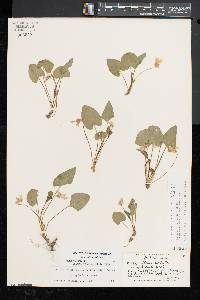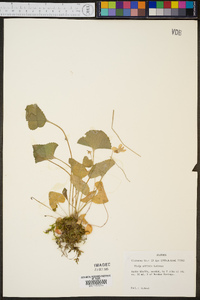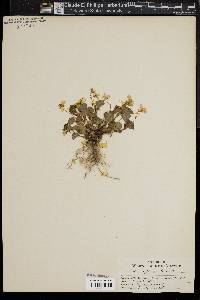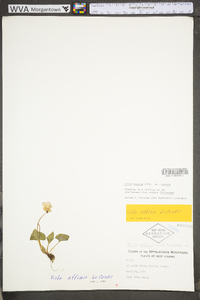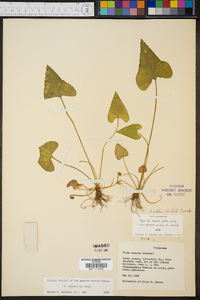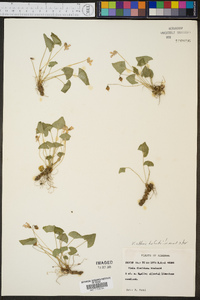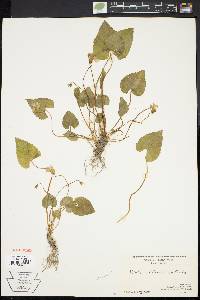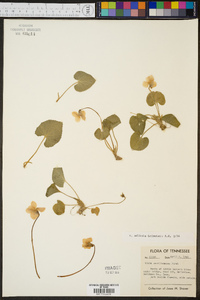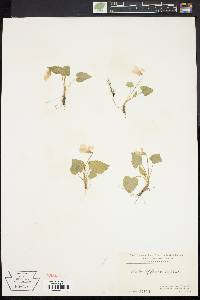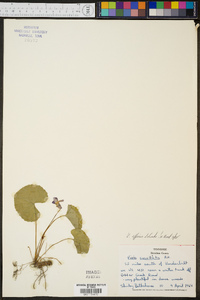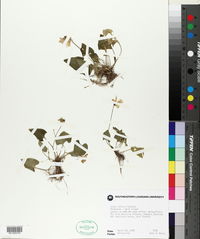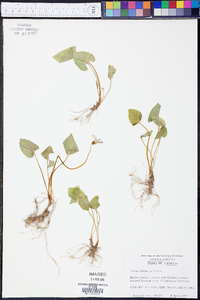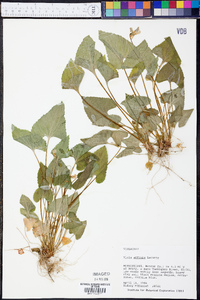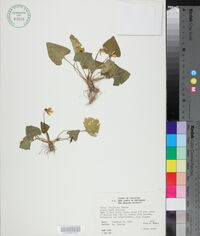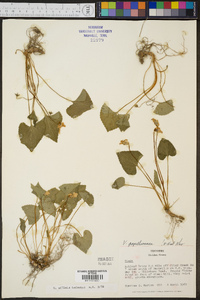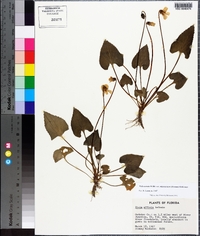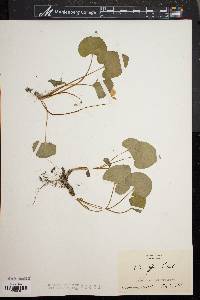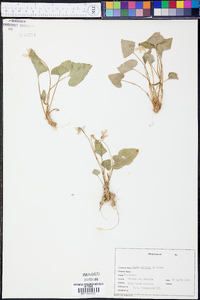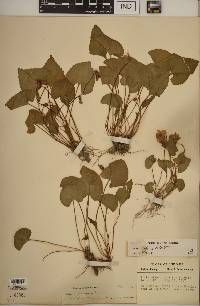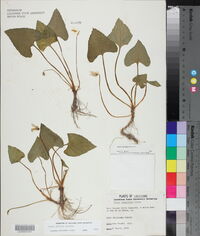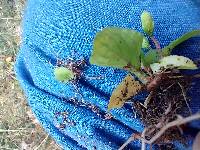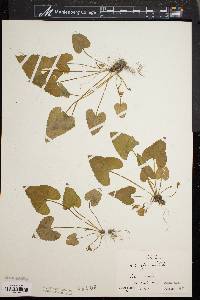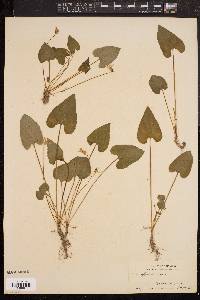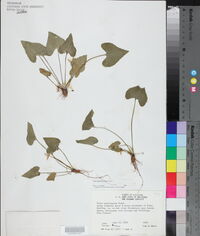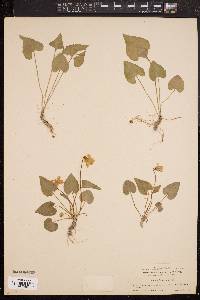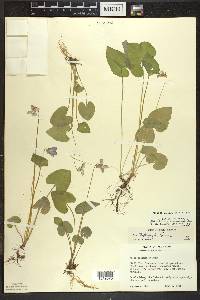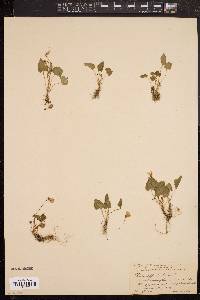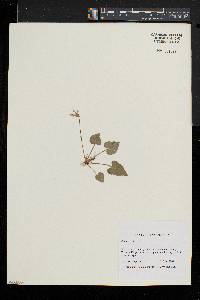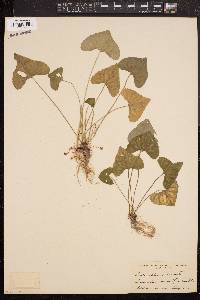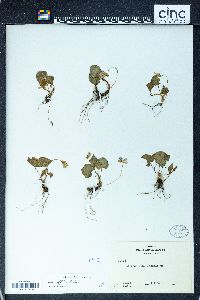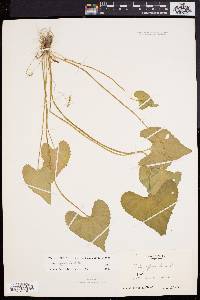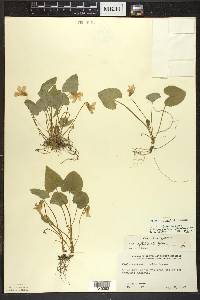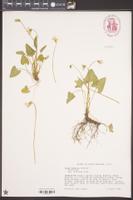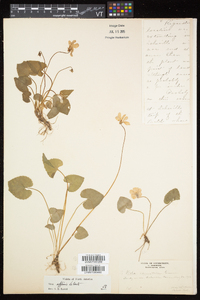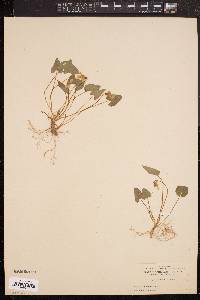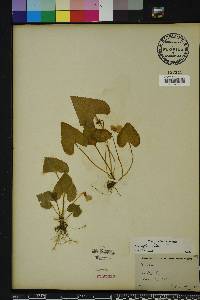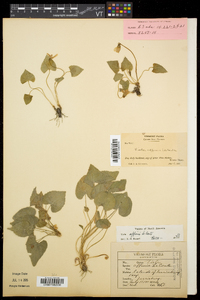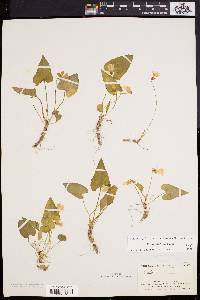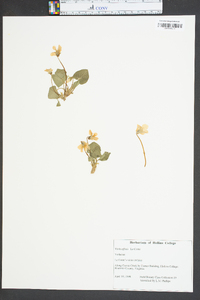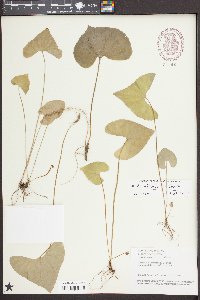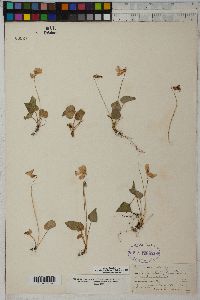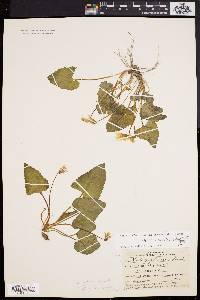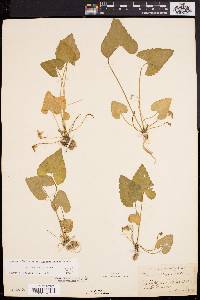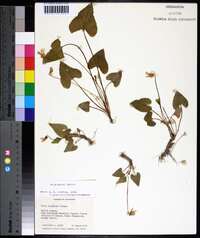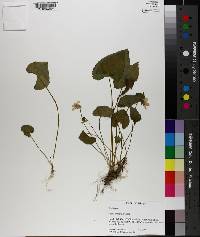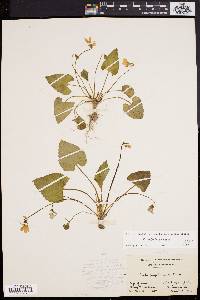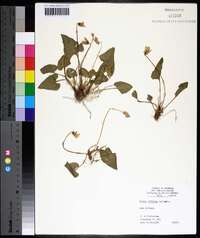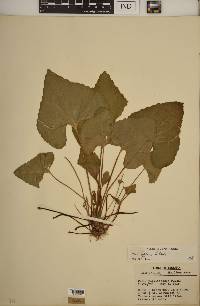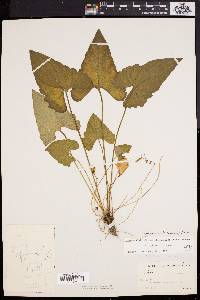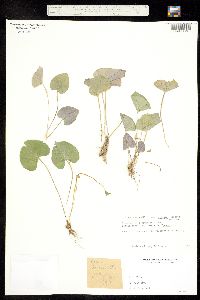Viola affinis
|
|
|
|
Family: Violaceae
Sand Violet, more...Leconte’s violet
[Viola chalcosperma Brainerd, moreViola crenulata , Viola obliqua var. crenulata (Greene) Farw., Viola rosacea Brainerd, Viola sororia subsp. affinis (LeConte) R.J.Little, Viola sororia var. affinis (LeConte) McKinney, Viola venustula Greene] |
PLANT: 3-25 cm tall. LEAVES: petioles 5 23 cm long; midseasonal leaf blades cordiform to very widely ovate, 10 45 mm long, 1.5 7 mm wide, glabrous but occasionally strigose-pubescent at lead base, ciliate or not. INFLORESCENCE: pedicels to 17 cm long. FLOWERS: sepals to 8 mm long; sepal auricles of cleistogamous flowers elongated; petals deep blue violet; lowest petals (including spur) 10 19 mm long, the spur blunt, ca 5 mm long, 3 mm wide, straight; cleistogamous pedicels ascending. NOTES: See also parent taxon. Wet or damp soil along creeks and streams, and shady hillsides of coniferous forests: Apache, Cochise, Coconino, Gila, Graham, Greenlee, Mohave, Pima, Santa Cruz, Yavapai cos; 1200 2900 m (4000 9500 ft); Mar Jul; AK (Yukon), w U.S. to IA, WI to ME; Can. Often confused with V. adunca which has branching stems and V. umbraticola which inhabits dry sites. Mistakenly called V. nephrophylla Greene by Kearney and Peebles. REFERENCES: Little, R. John. 2001. Violaceae. J. Ariz. - Nev. Acad. Sci. Volume 33(1). Perennial herb 10 - 20 cm tall Stem: absent aboveground, leaves and flowers arising independently and directly from rootstock of thick (much greater than 3 mm diameter) rhizomes, but lacking runners (stolons). Leaves: basal, long-stalked, usually hairless, sharply toothed, 2 - 8 cm long, narrowly egg-shaped (usually longer than wide) with somewhat indented base and tapered pointed tip. The stipules are green, less than 1.5 cm long, and fully separate from the leaf stalk. Flowers: long-stalked (about as tall as leaf tips), light to dark blue-violet, about 2 cm long, bilaterally symmetric with two upper petals, two lateral petals, and lower petal with base modified into a rounded nectar spur. In the summer, producing loosely ascending to spreading, slender, thread-like stalks terminated by very fertile flowers that do not open (cleistogamous). Sepals: five, green, usually hairless, lance-shaped with obviously sharp-pointed tips, and under 2 mm long ear-like appendages (auricles) at the base. Petals: five, separate, all differently shaped, but facing forward. The two lateral petals and lowest petal have a heavy beard of long, slender, thread-like hairs near the base, and the lowest petal also is prolonged at its base into a short, rounded spur or sac. Stamens: five, separate, but very tightly arranged so anthers touch as they surround ovary. The filaments are very short (anthers not exposed), and the lower two stamens have spur-like nectaries on their backs that extend into the spur or sac of the lower petal. Pistil: with a single-chambered, superior ovary; and a single style that expands into a short, scoop-shaped stigma. Fruit: a many-seeded, green with purple flecks, usually hairless, 0.5 - 0.9 cm long, ellipsoid capsule on prostrate or arched stalks. The capsule opens lengthwise from its top to disperse the light brown seeds which have a large amount of oily endosperm, and often an appendage (aril). Similar species: Viola affinis is very similar to V. sororia, but that species normally has hairy and wider leaves with abruptly pointed tips, the flowers are on shorter stalks (usually shorter than leaves), the sepals are more egg-shaped with blunt tips, and if the spur petal has hairs they are sparse. Also similar is V. cucullata, but the flower stalks of that species extend beyond the leaves, the sepal auricles are longer (2 - 10 mm), the spur petal is hairless, the lateral petals have short club-shaped hairs, and the capsules, which are entirely green and contain olive-black seeds, are on erect stalks. Flowering: April to May Habitat and ecology: Not common, usually in saturated loam or muck soils in moist shaded areas, bottomlands along streams or rivers, or even low wet prairies. Occurence in the Chicago region: native Notes: We follow Ballard (1994) in placing V. missouriensis as a synonym of V. affinis, with the belief that taxon varies widely in the upper Midwest United States. In fact, Ballard suggests the entity separated as V. missouriensis may be a result of hybridization in ecotonal areas between V. affinis and V. sororia. Unlike McKinney (1992), Ballard believes that V. affinis is clearly separable from V. sororia, especially considering the habitat preference of V. affinis for swampy or bottom land. Etymology: Viola is the classical name for the genus. Affinis means related, or similar. Author: The Field Museum From Flora of Indiana (1940) by Charles C. Deam In moist, alluvial soil, usually in woodland but also in the open and in prairies. Infrequent. …… Indiana Coefficient of Conservatism: C = 2 Wetland Indicator Status: FACW |

